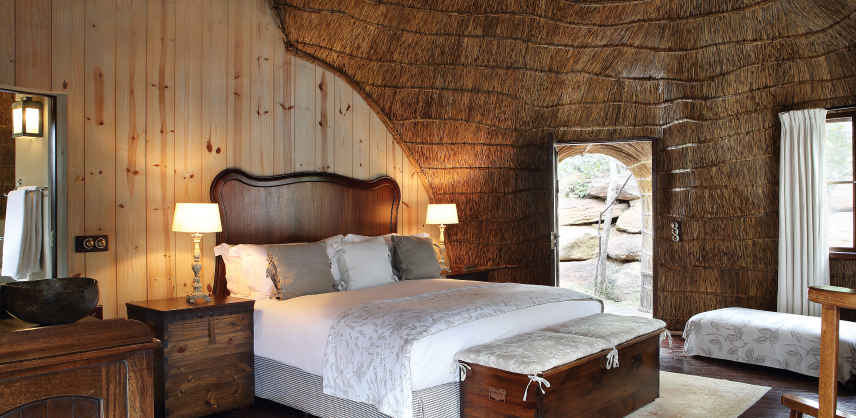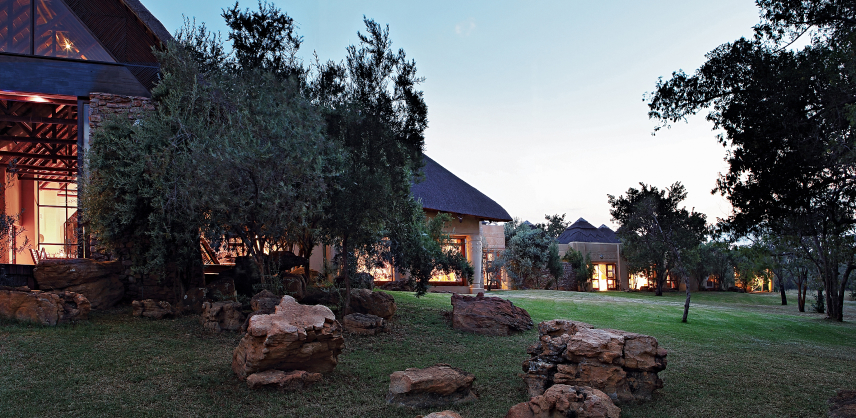Book directly with ease.
Along with the current changes around the world due to the novel Corona Virus, so comes more 'normal' changes - such as the changing of the seasons. Temperatures are dropping as the gradual shift from summer to winter takes place, and the effects are seen and noticed across Shambala Private Game Reserve. South Africa is quite a diverse country, with different cultures, places and people across nine provinces. With this the country has four seasons through which the environment undergoes natural change. For each of these nine provinces the changing seasons are experienced differently, but more or less at the same time. The dates for each of these seasons are shown below: Autumn - 01 March - 31 May Winter - 01June - 31 August Spring - 01 September - 30 November Summer - 01 December - 28/29 February With Shambala being located in the Limpopo Province of South Africa, it is in a summer rainfall area that gets blazing hot during the day. At peak time during the day, temperatures can be seen going as high as 40ºC. In the late afternoons one can expect cooling rain showers. However, during the winter, temperatures tend to reach lows of up to 0ºC, quite a drastic drop from the enjoyable summer sun. Throughout the day in winter the sun is still at most times present and pleasant, keeping the mid-day temperatures reasonable. However, it is in the early mornings, late afternoons and evenings that there is a substantial drop and extremely cool breezes that fill the air. Interesting Fact - At Shambala Private Game Reserve, towards the end of May 2020, there was a cold front moving in where temperatures have reached an all time low towards the start of winter with reports of -7ºC in the Alma Valley during the first cold front of the winter. It is also apparent that over the last week across three provinces in the country, namely Western Cape, Eastern Cape and Free State, there has been snow experienced on the mountain plateaus. In the Waterberg area, people refer to this as the '7 year turn', whereby winter is cold on time - very cold. From an ecological point of view it is very welcomed for various aspects of parasite control, alien invasive plant control and just letting nature take its course. - Tinus Nel, General Manager, Shambala Private Game Reserve. The current change from summer to winter is quite visible in the natural surroundings on Shambala as deciduous trees lose their leaves and become quite bare, the grass in the veld starts changing colour gradually from the sumptuous green to a more dry savannah yellow. Animals like Zebra, Blue Wildebeest, Giraffes and Impala start more frequent migration patterns to move around to areas where there is more grazing availability or food, as conditions become more severe. Winter time is a lot more dry, with minimal to no rainfall. Thus dams and rivers start to dry out, and plants and grasses don't have quite the same grazing value. This makes conditions tough for the animals, and Charles Darwin's theory of Survival of the Fittest really starts taking effect. Some animals don't make it through the winter, either due to an increase in predation from predators like Lions, Cheetahs and Leopard, or as a result of an animal falling victim to the severe conditions such as drought, etc. But with this difficult time for most herbivores like the Wildebeest, it may be to the advantage of the scavengers like Hyaenas and Jackals as these animals now gain the upper hand in food availability with the death of other animals. The changes affect all the animals differently, this makes Game drives quite interesting as one is able to witness all these changes in the environment and behaviour in animals unfold in front of you. Some believe that in winter times there is an increased chance of seeing animals in the bush, or at watering holes, as there is now less density in the trees and it makes it easier to spot animals. Also, with the animals migrating in search of resources, one might be lucky to find more sightings at a watering hole, as this is a place where animals will venture to in dry times to find a comforting drink. Another factor that needs to be considered is the vulnerability of having veld fires. Dry conditions and dry grass especially can result in devastating veld fires that occur as a result of lightning that may become present in the first storms of Spring. There are various measures that are put into place to try and prevent and/or combat a veld fires, such as Firebreaks that are created to prevent the fire from spreading rapidly and getting out of hand. There are various interesting phenomenon's that one can see among animals as they adapt to the winter conditions. As an example, amongst birds; these feathered friends perform interesting actions to help them with thermoregulation. Red-faced Mousebirds feed on leaves and shoots that require fermentation for digestion. This is improved by warming the belly, and they can often be seen spread-eagled with the belly feathers erect, allowing the sun to warm the skin. Other birds also warm their bodies in different ways, by sunning, for example. The easiest way to warm up is to sit in the sun. Birds sun themselves in many ways and will usually open the wings to expose as much of the body's surface as possible to the warming rays. Another way to keep warm is to look for shelter at night, or in cold rain and windy days, when temperatures usually plummet. Simply staying under an overhang, in a nest-hole of a tree or rock or just in a closed nest constructed of plant material can go a long way to maintaining body temperature and save the bird a lot of energy by not having to use physiological mechanisms. It is estimated that by staying in a nest, birds can capitalise on temperatures that can be as much as 5 - 10ºC warmer than the outside ambient temperature. Ranger Sean Jones Shambala Private Game Reserve [video width="640" height="352" mp4="https://shambalaprivategamereserve.co.za/app/uploads/2020/06/444d5f8a-e8dc-4b27-8b69-11f5703cbf45.mp4"][/video]



